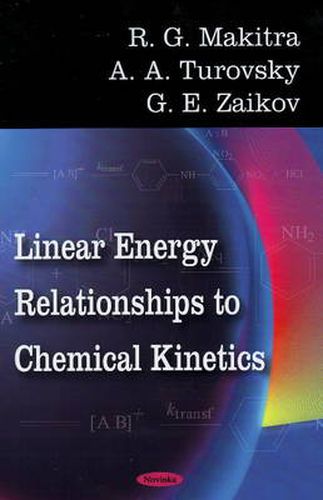Readings Newsletter
Become a Readings Member to make your shopping experience even easier.
Sign in or sign up for free!
You’re not far away from qualifying for FREE standard shipping within Australia
You’ve qualified for FREE standard shipping within Australia
The cart is loading…






Since the early investigations by Berthelot (1862) and N.A. Menshutkin (1887) the solvent effects on the chemical reaction rate is an object of regard for chemists. Primarily, solvents were considered as reaction media, and attempts were made to explain solvent effects by pure physical interactions. In recent decades, specific (chemical) interactions between solutes and the medium became of greater attention. Further on, the necessity of combined consideration of all solvation interactions in the solution was highly apprehended. Hence, a solvent may not only solvate the initial reagents and the initial state, but also take active part in its formation. Such consideration may be performed using linear free energy relationships (LFER). Numerical accuracy of the description will depend on adequacy of a formal solvation model which forms the basis of corresponded linear free energy (LFE) equation. At present, Koppel-Palm and Kamlet-Taft models are the most widespread. Corresponded reviews of various models are discussed. However, it should be remembered that these approaches are not the final dogma and are permanently changed and modified.
$9.00 standard shipping within Australia
FREE standard shipping within Australia for orders over $100.00
Express & International shipping calculated at checkout
Since the early investigations by Berthelot (1862) and N.A. Menshutkin (1887) the solvent effects on the chemical reaction rate is an object of regard for chemists. Primarily, solvents were considered as reaction media, and attempts were made to explain solvent effects by pure physical interactions. In recent decades, specific (chemical) interactions between solutes and the medium became of greater attention. Further on, the necessity of combined consideration of all solvation interactions in the solution was highly apprehended. Hence, a solvent may not only solvate the initial reagents and the initial state, but also take active part in its formation. Such consideration may be performed using linear free energy relationships (LFER). Numerical accuracy of the description will depend on adequacy of a formal solvation model which forms the basis of corresponded linear free energy (LFE) equation. At present, Koppel-Palm and Kamlet-Taft models are the most widespread. Corresponded reviews of various models are discussed. However, it should be remembered that these approaches are not the final dogma and are permanently changed and modified.